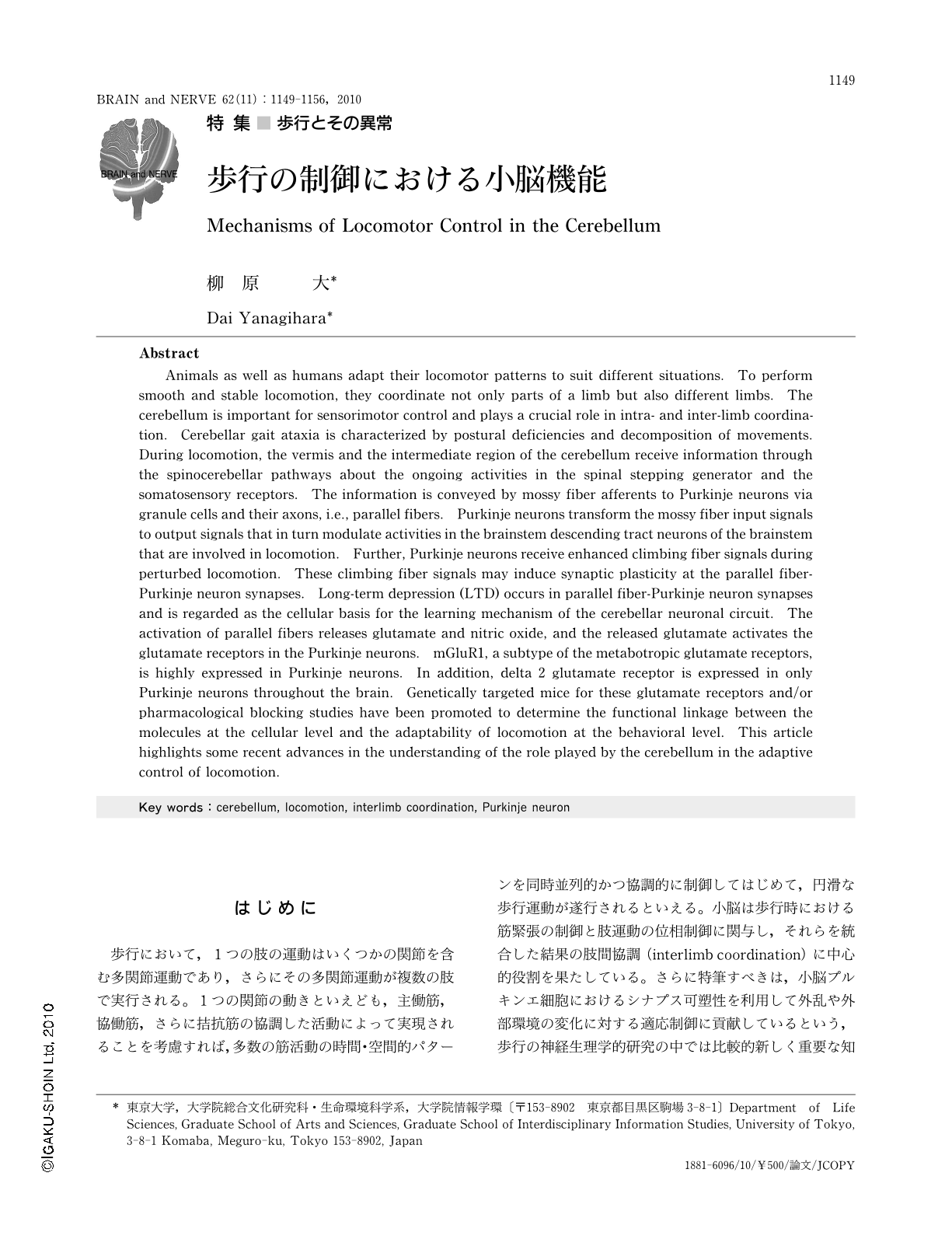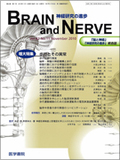Japanese
English
- 有料閲覧
- Abstract 文献概要
- 1ページ目 Look Inside
- 参考文献 Reference
はじめに
歩行において,1つの肢の運動はいくつかの関節を含む多関節運動であり,さらにその多関節運動が複数の肢で実行される。1つの関節の動きといえども,主働筋,協働筋,さらに拮抗筋の協調した活動によって実現されることを考慮すれば,多数の筋活動の時間・空間的パターンを同時並列的かつ協調的に制御してはじめて,円滑な歩行運動が遂行されるといえる。小脳は歩行時における筋緊張の制御と肢運動の位相制御に関与し,それらを統合した結果の肢間協調(interlimb coordination)に中心的役割を果たしている。さらに特筆すべきは,小脳プルキンエ細胞におけるシナプス可塑性を利用して外乱や外部環境の変化に対する適応制御に貢献しているという,歩行の神経生理学的研究の中では比較的新しく重要な知見である。本稿では,歩行制御系の中での小脳の位置づけ,種々の遺伝子変異マウスにおける歩行失調,ならびに動物およびヒトでの歩行の適応制御に関する研究動向を概説する。
Abstract
Animals as well as humans adapt their locomotor patterns to suit different situations. To perform smooth and stable locomotion,they coordinate not only parts of a limb but also different limbs. The cerebellum is important for sensorimotor control and plays a crucial role in intra- and inter-limb coordination. Cerebellar gait ataxia is characterized by postural deficiencies and decomposition of movements. During locomotion,the vermis and the intermediate region of the cerebellum receive information through the spinocerebellar pathways about the ongoing activities in the spinal stepping generator and the somatosensory receptors. The information is conveyed by mossy fiber afferents to Purkinje neurons via granule cells and their axons,i.e.,parallel fibers. Purkinje neurons transform the mossy fiber input signals to output signals that in turn modulate activities in the brainstem descending tract neurons of the brainstem that are involved in locomotion. Further,Purkinje neurons receive enhanced climbing fiber signals during perturbed locomotion. These climbing fiber signals may induce synaptic plasticity at the parallel fiber-Purkinje neuron synapses. Long-term depression (LTD) occurs in parallel fiber-Purkinje neuron synapses and is regarded as the cellular basis for the learning mechanism of the cerebellar neuronal circuit. The activation of parallel fibers releases glutamate and nitric oxide,and the released glutamate activates the glutamate receptors in the Purkinje neurons. mGluR1,a subtype of the metabotropic glutamate receptors,is highly expressed in Purkinje neurons. In addition,delta 2 glutamate receptor is expressed in only Purkinje neurons throughout the brain. Genetically targeted mice for these glutamate receptors and/or pharmacological blocking studies have been promoted to determine the functional linkage between the molecules at the cellular level and the adaptability of locomotion at the behavioral level. This article highlights some recent advances in the understanding of the role played by the cerebellum in the adaptive control of locomotion.

Copyright © 2010, Igaku-Shoin Ltd. All rights reserved.


